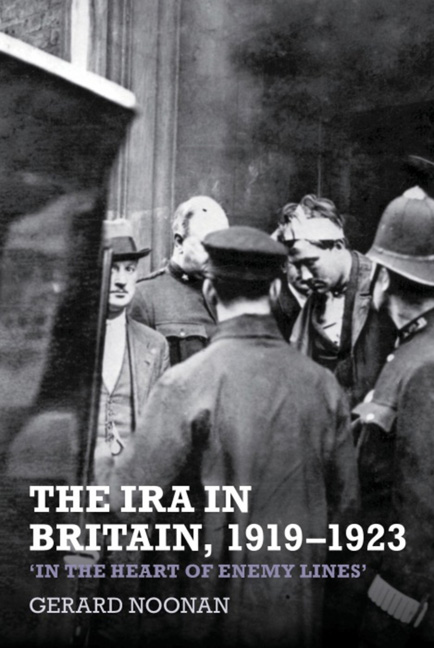Book contents
- Frontmatter
- Contents
- List of Illustrations
- List of Tables
- List of Graphs
- List of Abbreviations
- Acknowledgements
- Introduction
- Prologue
- 1 ‘On a Solid Footing’: Organizing Republicanism in Britain, January 1919–July 1921
- 2 Supplying an Army: Gunrunning in Britain, January 1919–July 1921
- 3 ‘We are doing what you are doing in Ireland’: IRA Operations in Britain, January 1919–July 1921
- 4 Truce, Treaty and Dissension, July 1921–June 1922
- 5 The Civil War, June 1922–May 1923
- 6 Combating the ‘Sinn Fein Movement’ in Britain: The Response of the Authorities, 1919–1923
- Epilogue and Conclusion
- Select Bibliography
- Index
5 - The Civil War, June 1922–May 1923
- Frontmatter
- Contents
- List of Illustrations
- List of Tables
- List of Graphs
- List of Abbreviations
- Acknowledgements
- Introduction
- Prologue
- 1 ‘On a Solid Footing’: Organizing Republicanism in Britain, January 1919–July 1921
- 2 Supplying an Army: Gunrunning in Britain, January 1919–July 1921
- 3 ‘We are doing what you are doing in Ireland’: IRA Operations in Britain, January 1919–July 1921
- 4 Truce, Treaty and Dissension, July 1921–June 1922
- 5 The Civil War, June 1922–May 1923
- 6 Combating the ‘Sinn Fein Movement’ in Britain: The Response of the Authorities, 1919–1923
- Epilogue and Conclusion
- Select Bibliography
- Index
Summary
I
The civil war was ‘the greatest tragedy of Irish history’, Liam Daly, veteran of the London Volunteers, declared in 1950. With former comrades now fighting each other, the achievements of the 1919–21 war were tarnished and overlaid with bitterness and sadness. While some Volunteers remained in Britain, others travelled to Ireland and fought in the ranks of the National Army or the IRA there. Consequently, this chapter treats the civil war period on both sides of the Irish Sea. Section II traces the course of the war in Ireland through the eyes of the fighters from Britain. Section III deals with rival republican and Free State organizations in Britain, from the Volunteers to the ISDL, while the following section covers the gunrunning activities of the IRA. Section V discusses the plans laid down for the resumption of hostilities in Britain and the reason why they were not realized, namely the mass arrest of republicans in March 1923. Section VI concludes.
II
Men and women who served in the Volunteers in Britain from 1914 onwards fought on both sides during the civil war in Ireland. In a census conducted in November 1922, 267 soldiers in the National Army listed their home addresses as being in Britain. Scotland accounted for 183 of these, 80 in Glasgow alone. Another 81 soldiers came from England: 20 from Liverpool, 17 from London, ten from Manchester, four from Birmingham, two from Newcastle-upon-Tyne and 28 from elsewhere. The remaining three soldiers came from Wales. An additional 113 soldiers who gave home addresses in Ireland listed their next-of-kin addresses as being in Britain. England accounted for 77 of these: London 25, Liverpool 14, Manchester nine, Birmingham one, Newcastleupon- Tyne one and the remainder of the country 27. 34 were in Scotland, including 24 in Glasgow, while the remaining two were in Wales. As the majority of next-of-kin were close relations, such as parents, wives and siblings, it is fair to surmise that these soldiers were from Britain too. Therefore, at least 380 soldiers in the National Army were from Britain. As total army strength at this time was around 35,000, this constituted almost 1.1 per cent of recruits. Of the 380, 57 had sworn the oath of loyalty before the outbreak of war on 28 June, and 306 did so afterwards.
- Type
- Chapter
- Information
- The IRA in Britain, 1919–1923‘In the Heart of Enemy Lines’, pp. 229 - 262Publisher: Liverpool University PressPrint publication year: 2014



